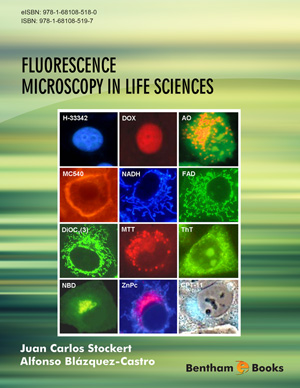Abstract
This book tries to be a guide for understanding fluorescence microscopy, and explaining its chemical and physical principles for workers in biomedical sciences, especially those with limited expertise in chemistry and physics. In contrast to early morphological studies, considerable background of physics and chemistry is at present necessary to make fluorescence microscopy a more fruitful technique. In this book we therefore attempt to simplify and make understandable the basis of fluorescence reactions and their biomedical applications. When possible, mechanistic approaches have been introduced regarding dye affinity and fluorescent selectivity. To make the text more didactic and amenable, cell and tissue pictures, diagrams, graphs and chemical structures are included. Obviously, overlapping of several issues concerning fluorochromes and fluorescence techniques will be found along chapters. As an example, consider binding of a fluorescent ligand to a biomolecule. This can be studied from the point of view of (1) ligand properties and binding, (2) substrate structure and affinity, (3) reaction methodology, mechanisms, instrumentation, etc. In turn, ligands can be simple molecules (fluorochromes, vital probes), macromolecules (phycobilins, fluorescent proteins), or multi-molecular complexes (labeled IgG, lectins, oligonucleotides), in which different fluorescent labels are used for visualizing a great variety of biological substrates.
Keywords: Amphoteric dyes, Dark-field illumination, Fluorescent labels, Hematoxylin, Hydrophobic dyes, Indigo, Ionic dyes, Lignum Nephriticum, Mordant dyes, Nile blue, Orcein, Photoactive dyes, Polarization microscopy, Reactive dyes, Solvent dyes.






















